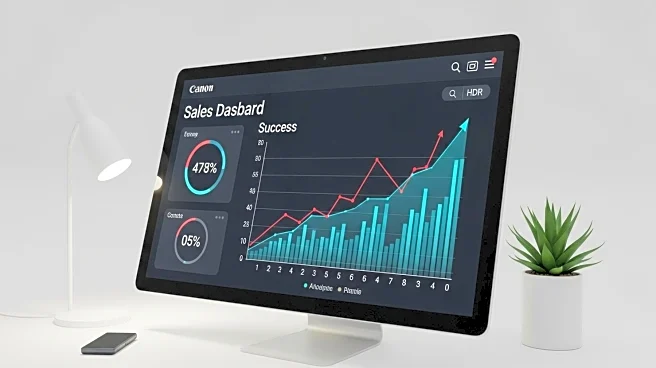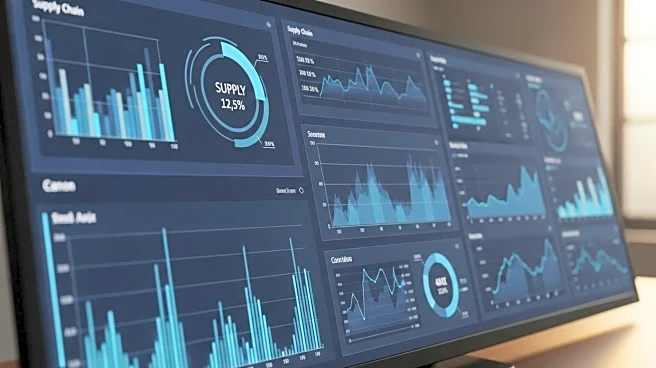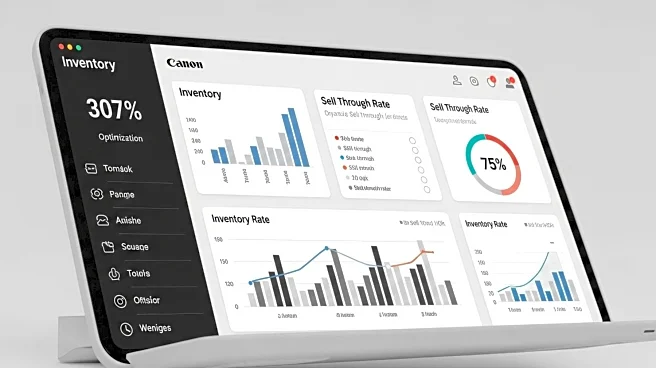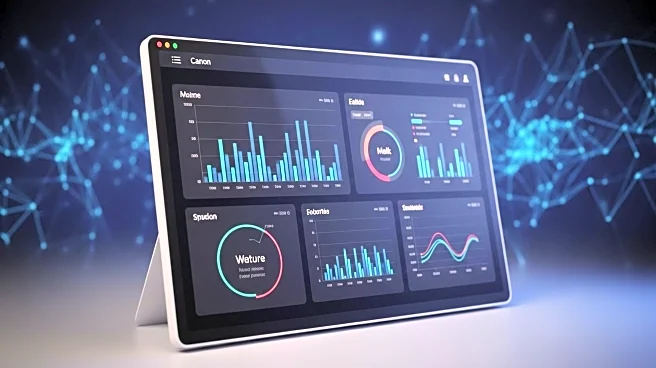What is the story about?
What's Happening?
Shopify has emphasized the significance of the sell-through rate (STR) as a key performance indicator for retail businesses. The STR measures the percentage of inventory sold in relation to the number of units received from manufacturers during a specific period. This metric is crucial for understanding sales trends, optimizing inventory, and improving profitability. Shopify suggests that a healthy STR is typically in the range of 70% to 80%, although this can vary by industry. The company provides tools to help retailers calculate and improve their STR, such as the Shopify POS system, which integrates inventory management across various sales channels. By tracking STR, businesses can identify product demand, reduce carrying costs, and optimize supply chain relationships.
Why It's Important?
The sell-through rate is a critical metric for retailers as it directly impacts profitability and inventory management. A high STR indicates strong product demand and efficient inventory turnover, which can lead to increased revenue and reduced storage costs. Conversely, a low STR suggests overstocking and potential financial losses due to unsold inventory. By focusing on STR, retailers can make informed decisions about purchasing, marketing, and sales strategies. This can lead to better cash flow, improved supplier relationships, and more effective marketing campaigns. As e-commerce continues to grow, understanding and optimizing STR becomes increasingly important for businesses to remain competitive in the retail market.
What's Next?
Retailers are likely to continue leveraging technology to enhance their STR. Tools like Shopify's inventory management system and analytics can provide valuable insights into sales trends and customer preferences. Businesses may also explore strategic promotions, product bundling, and targeted marketing to boost their STR. As the retail landscape evolves, companies that effectively manage their inventory and adapt to changing consumer demands will be better positioned for success. Additionally, the integration of artificial intelligence and data analytics in inventory management could further refine demand forecasting and inventory optimization.
Beyond the Headlines
The focus on sell-through rates highlights a broader trend in retail towards data-driven decision-making. As retailers gather more data on consumer behavior and sales patterns, they can tailor their strategies to meet specific market demands. This shift towards data-centric operations may also influence how retailers approach sustainability, as optimizing inventory can reduce waste and improve resource efficiency. Furthermore, the emphasis on STR underscores the importance of agility in retail, as businesses must quickly adapt to market changes to maintain profitability.
AI Generated Content
Do you find this article useful?













